| |
MOUNTAIN CURIOSITIES
Sonia Sbolzani
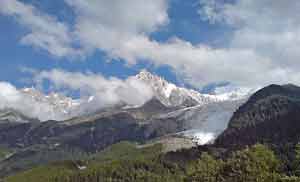 Play is a serious pursuit. Mountain bibliophiles are quite familiar with the alpine snakes and ladders game of English origin, which was developed in the mid-nineteenth century, and is considered the father of all the popular summit games. Called "The New Game of the Ascent of Mont Blanc", a copy was exhibited in Turin at the National Mountain Museum during the unique exhibition "Mountains for fun. Among the summits and snow of table games" (held from December 2006 to May 2007). Play is a serious pursuit. Mountain bibliophiles are quite familiar with the alpine snakes and ladders game of English origin, which was developed in the mid-nineteenth century, and is considered the father of all the popular summit games. Called "The New Game of the Ascent of Mont Blanc", a copy was exhibited in Turin at the National Mountain Museum during the unique exhibition "Mountains for fun. Among the summits and snow of table games" (held from December 2006 to May 2007).
In brief, the game consists of a coloured table marked with a spiral route with 50 boxes illustrated like a cartoon strip, on which you can move backwards or forwards. The goal is Mont Blanc, while the starting point is London, and more precisely the Egyptian Hall at Piccadilly Circus, i.e. the place the game was developed. It replicates the adventurous voyage narrated in a highly successful diorama show like "The Ascent of Mont Blanc" by the doctor-showman-mountaineer Albert Smith (founder of the Alpine Club, forefather of all alpine clubs, in 1857).
A recent book and exhibition of charming watercolours and photographs helped to commemorate the role of a famous mountaineer who was very fond of the Dolomites as was Napoleone Cozzi. Exemplary protagonist of the years leading up to the Great War, he conquered numerous summits of the eastern Alps, engaging in an epic sports battle with Austrian and German mountaineers that was stimulated by their respective national feelings (a battle that would become real a few years later to the tune of artillery fire).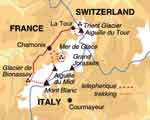
However, Cozzi, in addition to being a "champion" at high altitudes, was also an accomplished painter and courageous, irredentist patriot. The exhibition "From Trieste to the Alps" (held in Pozzo di Travesio, Pordenone, his birthplace) worthily enhanced his artistic qualities, while the book "Ardimenti e incantevoli ozi" (Courage and dreamy inactivity) (Nuovi Sentieri, Belluno), edited by the art historian and alpinist Melania Lunazzi, reintroduced a 1902 album containing dozens of splendid watercolours set in the Dolomites, accompanied by photographs and drawings. Indeed, it was on account of his alpine sketches that Cozzi met with a bizarre misadventure in 1907. Mistaken for a spy, he was released after several days imprisonment in Klagenfurt (on the other hand, he had been imprisoned in Trieste as a suspected bomber two years earlier, put on trial in Vienna and finally acquitted). He died of illness in Monza in 1916, after he raced to enlist in the Alpine troops (ça va sans dire) at the outbreak of the First World War.
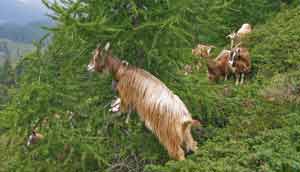 She is called "Marilyn Monroe", but she is not a platinum vamp, but rather a mountain goat, The Blond of the Adamello, belonging to a light-furred species that was in danger of extinction until a few years ago (many appeals were made by R.a.r.e. -the Italian association of native species in danger of extinction- for its protection). She is called "Marilyn Monroe", but she is not a platinum vamp, but rather a mountain goat, The Blond of the Adamello, belonging to a light-furred species that was in danger of extinction until a few years ago (many appeals were made by R.a.r.e. -the Italian association of native species in danger of extinction- for its protection).
However, it now appears out of danger and a renewed interest is creating due appreciation of the goat's produce. Indeed, excellent cheeses are made from its superior milk, including the extraordinary "fatuli" with a pleasant, pungent taste.
Present especially in the Tridentine Alps and in the region of Brescia (Camonica Valley), around 4000 head of this goat are bred in 120 stalls and a further increase is planned.
From May to September, the Blonds climb high up the mountains and descend to pasture in autumn, but always above an altitude of 1000 metres.
Ed Viesturs, the first American to conquer the planet's eight-thousand metre peaks (without the use of bottled oxygen) wrote a scrupulous book together with the journalist David Roberts called "In vetta senza scorciatoie" (Climbing peaks without shortcuts) (Corbaccio Publishers), in which he invites mountaineers (not only amateurs) to show more good sense and respect the life and rules of the mountain, the first of which is: never take weather forecasts lightly and consequently: if in doubt, turn back. scrupulous book together with the journalist David Roberts called "In vetta senza scorciatoie" (Climbing peaks without shortcuts) (Corbaccio Publishers), in which he invites mountaineers (not only amateurs) to show more good sense and respect the life and rules of the mountain, the first of which is: never take weather forecasts lightly and consequently: if in doubt, turn back.
While reading it, we could not but recall the negative example of Viesturs' companion for several years, the beautiful French mountaineer Chantal Mauduit, who was overcome by a sudden avalanche in 1998. Saved on earlier occasions by her colleagues, whom she did not even thank, she finally paid her rashness and vanity with her life.
The Lessinia Film Festival, which held its thirteenth edition in 2007 in Bosco Chiesanuova (VR), is the only international competition dedicated exclusively to the life, history and traditions of the mountain. Films from a spectrum of countries that increases year after year take part, establishing its reputation as one of the most prestigious and important competitions in Europe. With the aim of revealing the culture of the mountain tout court, the Lessinia Film Festival also hosts exhibitions, editorial presentations, musical events, and meetings with directors and various guests.
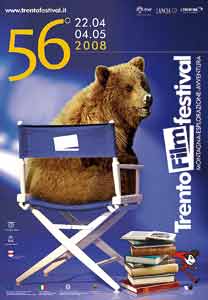 Special events celebrated during the past edition included the showing of "Il postino di montagna" (The Mountain Postman), adapted from a story by Dino Buzzati, and two silent black and white films given by the Turin Film Museum: "Tra i ghiacci e le nevi del Tonale" (Among the ice and snow of Tonale) and "Maciste alpino"(Alpine Hercules). Special events celebrated during the past edition included the showing of "Il postino di montagna" (The Mountain Postman), adapted from a story by Dino Buzzati, and two silent black and white films given by the Turin Film Museum: "Tra i ghiacci e le nevi del Tonale" (Among the ice and snow of Tonale) and "Maciste alpino"(Alpine Hercules).
The republication of the famous 19th century satirical book "Tartarino sulle Alpi" (Tartarino in the Alps) by Alphonse Daudet (Cda&Vivalda Publishers) appeared a few months ago. This French work, first offered as a gift to subscribers of "La Lettura" (a monthly publication of Italy's "Corriere della Sera") in 1887, is reintroduced in the excellent translation done several decades ago by the Florentine writer, Aldo Palazzeschi.
Our interest for this return of "Tartarino", an adventurer who lives in a dream world and is much loved and not only by children, derives from the fact that, in the afterword, Pietro Crivellaro (in addition to placing Daudet in an historical perspective) reconstructs with painstaking accuracy, step by step, the birth of alpine tourism with particular attention to Italy.
Following the demise of the once prestigious Mountain Trade Show, a traditional event in Turin that used to anticipate the skiing season, Lingotto has been hosting the biennial Alpi365 Expo Show for the last few years. It aims to illustrate all of the most authentic aspects of mountain life throughout the calendar year. Exhibitors are grouped together according to the following themes: culture, habitability, resources and savours.
For the occasion, the Permanent Seminar on Alpine Ethnography, organised every year by the Museum of San Michele all'Adige, also came to Turin in October 2007, concentrating on several of the world's most famous alpinists.
The merit for organising such a complex event like Alpi365Expo must go to the Book, Music and Culture Foundation. 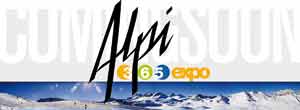
"Firstly, the mountain forces us to acknowledge this bitter truth: time exists. It is the centre of our lives, but it is not made in our own image and likeness", writes Davide Longo in the introduction to the book "Racconti di montagna" (Mountain Tales), published recently by Einaudi.
From Nabokov to Kafka, from Primo Levi to Mario Rigoni Stern, from Petrarch to Fosco Maraini, to name only a few of the authors who have dealt with the "absolute" of the peaks and the topic of ascent, the book is the representation of the mountain as the extreme theatre of life and, consequently, as the ideal literary site where one truly has the sensation of "creating" the world.
Moreover, narrating the mountain with the words of the greatest writers means letting one's own life shift to an inclined plane, questioning it at all time to achieve, at the end, supporting certitudes at the summit.
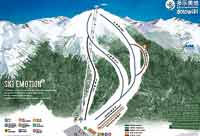 The Dolomites have literally moved to China, thanks to several companies from Alto Adige, world leaders in the field of rope facilities and snowcats. The first Dolomites Mountain Resort, a fully equipped winter resort with ski runs and ad hoc facilities, was opened in the region of Hebei (218 Km north of Beijing). The project, which triggered much interest in the Asian country on the eve of the 2008 Olympics, testifies to the great love of the Chinese -particularly the more educated and affluent- for our most beautiful mountains, which they may have fallen in love with during a trip to Italy or by simply admiring them in photographs. And yes, we do, indeed, jealously guard our real Dolomites! The Dolomites have literally moved to China, thanks to several companies from Alto Adige, world leaders in the field of rope facilities and snowcats. The first Dolomites Mountain Resort, a fully equipped winter resort with ski runs and ad hoc facilities, was opened in the region of Hebei (218 Km north of Beijing). The project, which triggered much interest in the Asian country on the eve of the 2008 Olympics, testifies to the great love of the Chinese -particularly the more educated and affluent- for our most beautiful mountains, which they may have fallen in love with during a trip to Italy or by simply admiring them in photographs. And yes, we do, indeed, jealously guard our real Dolomites!
The book "Morte sull'Eiger. Il dramma di Claudio Corti e Stefano Longhi" (Death on the Eiger. The tragedy of Claudio Corti and Stefano Longhi) edited by Daniel Anker, Giovanni Capra and Rainer Rettner (Corbaccio Publishers) helps to definitively rehabilitate the role of the Italian alpinist, Claudio Corti, unjustly held responsible for the death in 1957 of his two German companions (Gunter Nothdurft and Franz Mayer), while they were climbing up the notorious Eiger, the colossal peak in the Bern Oberland (3,970 metres, virtually more difficult than a much higher peak in the Himalayas). When their endeavour failed on account of a snowstorm from which only Corti (the rescue team could not even save Longhi) emerged alive, the famous Austrian alpinist Heinrich Harrer, a convinced Nazi and future hero of "Seven Years in Tibet" (also known as author of "The White Spider", first published in 1958) accused Corti of having disregarded the fate of his two Teutonic companions. But the recovery of their bodies in 1961 vindicated the Italian, while Harrer reiterated his infamous accusation in later republications of his "White Spider".
Now, at last, thanks to this new book published by Corbaccio, justice is served and Claudio Corti, the working man from Lecco, who had dared to brave the forbidding Eiger has finally received the recognition he deserves.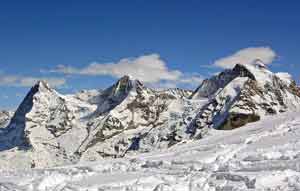
Artists and art critics gather together in the Tridentine mountains to ski, discuss and reflect: creating a community spirit is also an art. On second thoughts, the creative Director of the Municipal Gallery of Trento, Fabio Cavallucci, who has turned the city into an internationally recognised art centre by soliciting the existence and the need for two types of museums: one "enticing" that attracts the public to designated buildings for exhibitions and a variety of performances, and the other "circulating" that takes events into the city streets and squares, using art to mirror social contradictions. This is why Trento has emerged in recent years as an important educational and conceptual centre with laboratories, conferences and original events that have seen the presence of highly reputed and prominent artists. They are also those who, given the occasion to visit the Alps, have not hesitated to treat themselves to a winter white week and a stay amongst the greenery.
|
|